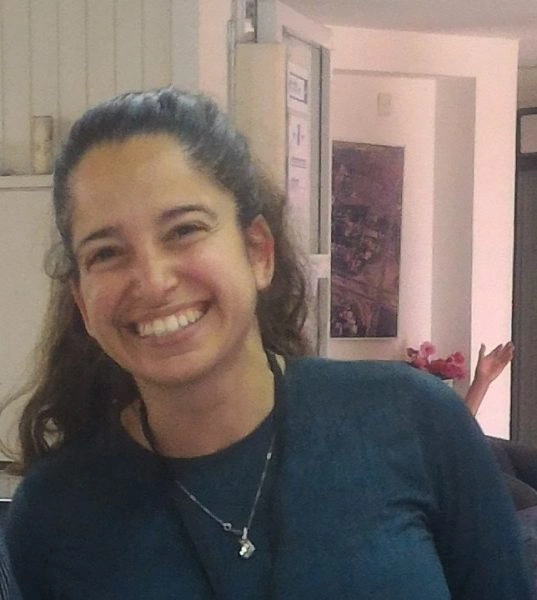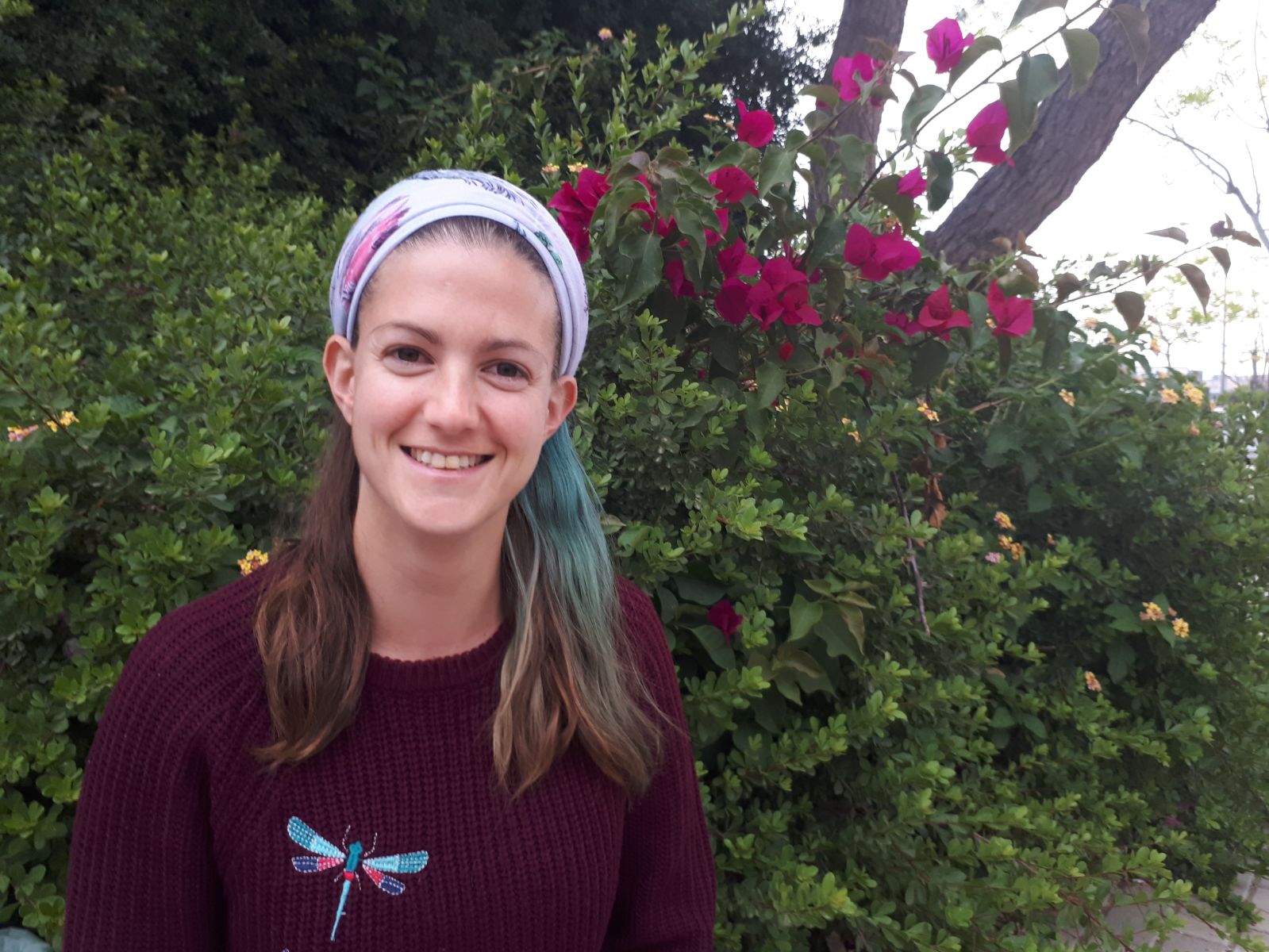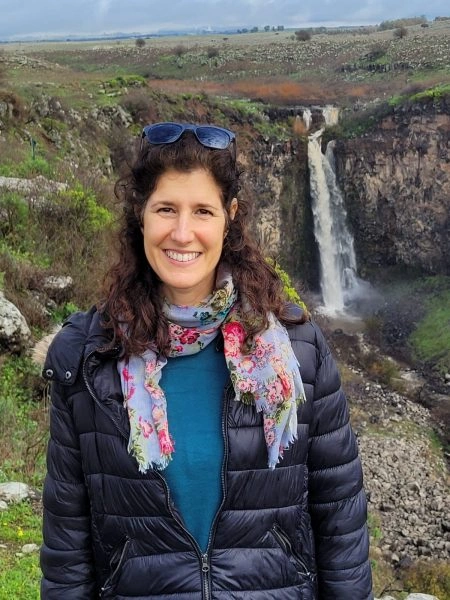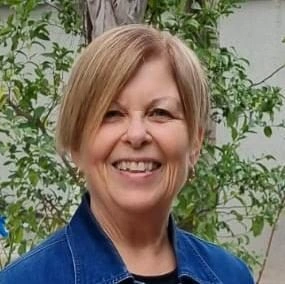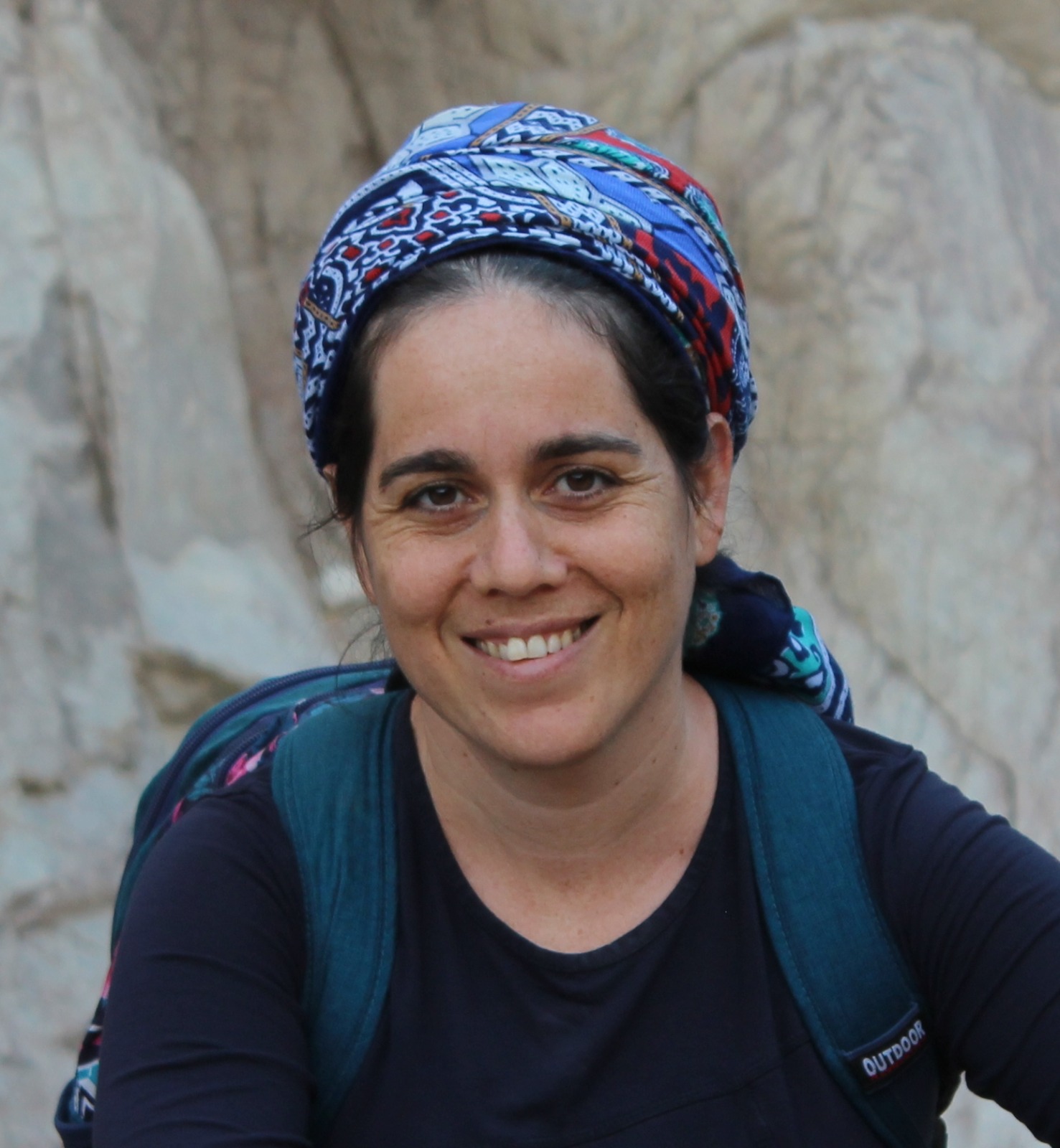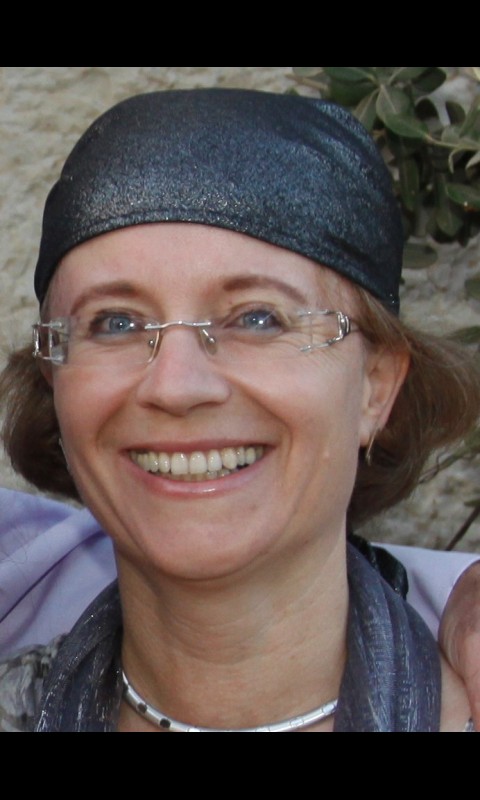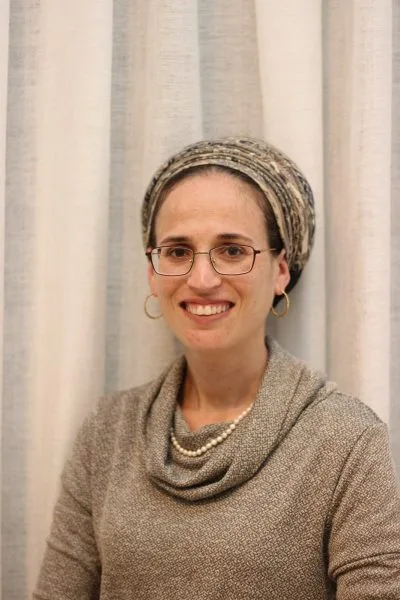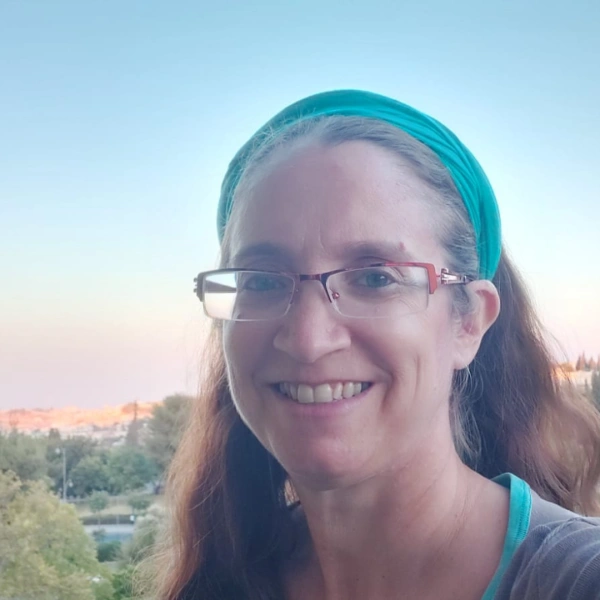בבא מציעא כג
דְּמִדַּרְסָא. בִּרְשׁוּת הַיָּחִיד – נוֹטֵל וּמַכְרִיז, דְּלָא מִדַּרְסָא. וְהָאֲלוּמּוֹת, בֵּין בִּרְשׁוּת הָרַבִּים וּבֵין בִּרְשׁוּת הַיָּחִיד – נוֹטֵל וּמַכְרִיז, כֵּיוָן דִּגְבִיהָן לָא מִדַּרְסָא.
that they are trampled. Even if there had been a distinguishing mark on the bundles it would have been destroyed when it was trampled. If he finds them in a secluded area, the finder takes the sheaves and proclaims his find, as due to the absence of pedestrian traffic they are not trampled and the distinguishing mark remains intact. And with regard to the sheaves, whether he finds them in a public area or whether he finds them in a secluded area, the finder takes them and proclaims his find. Since they protrude high above the ground, they are not trampled.
וְרָבָא מְתָרֵץ לְטַעְמֵיהּ בְּמָקוֹם: כְּרִיכוֹת בִּרְשׁוּת הָרַבִּים הֲרֵי אֵלּוּ שֶׁלּוֹ – דְּמִינַּשְׁתְּפָא. בִּרְשׁוּת הַיָּחִיד חַיָּיב לְהַכְרִיז – דְּלָא מִינַּשְׁתְּפָא. וְהָאֲלוּמּוֹת, בֵּין בִּרְשׁוּת הָרַבִּים, וּבֵין בִּרְשׁוּת הַיָּחִיד – נוֹטֵל וּמַכְרִיז, כֵּיוָן דְּיַקִּירֵי לָא מִינַּשְׁתְּפָא.
And Rava explains, according to his line of reasoning, that the baraita is referring to bundles whose location is their distinguishing mark: If one finds bundles of grain in a public area, these belong to him due to the fact that they are kicked and they consequently roll to a different location than where they were placed. If he finds them in a secluded area, he is obligated to proclaim his find. Due to the absence of pedestrian traffic they are not kicked and do not roll, and they therefore remain in the location where they were placed. And with regard to the sheaves, whether he finds them in a public area or whether he finds them in a secluded area, the finder takes them and proclaims his find. Since they are heavy, they do not roll when kicked.
תָּא שְׁמַע: כִּכָּרוֹת שֶׁל נַחְתּוֹם – הֲרֵי אֵלּוּ שֶׁלּוֹ. הָא שֶׁל בַּעַל הַבַּיִת חַיָּיב לְהַכְרִיז. שֶׁל בַּעַל הַבַּיִת מַאי טַעְמָא? כֵּיוָן דְּאִית בְּהוּ סִימָן, דְּמִידָּע יְדִיעַ רִפְתָּא דְאִינִישׁ אִינִישׁ הוּא. וְלָא שְׁנָא רְשׁוּת הָרַבִּים וְלָא שְׁנָא רְשׁוּת הַיָּחִיד – נוֹטֵל וּמַכְרִיז, אַלְמָא סִימָן הֶעָשׂוּי לִידָּרֵס הָוֵי סִימָן, תְּיוּבְתָּא דְּרַבָּה!
The Gemara suggests: Come and hear a proof from the mishna: If one found baker’s loaves, these belong to him. The Gemara infers: But if one finds loaves of a homeowner, he is obligated to proclaim his find. What is the reason? When one finds loaves of a homeowner he is obligated to proclaim his find because there is a distinguishing mark on the loaves. As each person shapes his loaves in a unique manner, it is known that the loaves of a person belong to that person. And there is no difference if the loaves were found in a public area, and there is no difference if the loaves were found in a secluded area; the finder takes the item and proclaims his find. Apparently, the legal status of a distinguishing mark that is prone to be trampled is that of a distinguishing mark. This is a conclusive refutation of the opinion of Rabba.
אָמַר לָךְ רַבָּה: הָתָם הַיְינוּ טַעְמָא – מִשּׁוּם דְּאֵין מַעֲבִירִין עַל הָאוֹכָלִין. וְהָא אִיכָּא גּוֹיִם! גּוֹיִם חָיְישִׁי לִכְשָׁפִים. וְהָאִיכָּא בְּהֵמָה וּכְלָבִים! בְּאַתְרָא דְּלָא שְׁכִיחִי בְּהֵמָה וּכְלָבִים.
Rabba could have said to you: There, this is the reason that one must return the loaves of a homeowner found in a public area. It is due to the fact that one does not pass by food without picking it up. Therefore, it can be assumed that it will not be trampled. The Gemara asks: But aren’t there gentiles who do not treat food with deference and who will trample the loaves? The Gemara answers: Gentiles are concerned that the loaves were placed in a public area for reasons of sorcery. The Gemara asks: But aren’t there beasts and dogs that will trample the loaves? The Gemara answers: The mishna is referring to a place where beasts and dogs are not commonly found.
לֵימָא כְּתַנָּאֵי: רַבִּי יְהוּדָה אוֹמֵר: כׇּל דָּבָר שֶׁיֵּשׁ בּוֹ שִׁינּוּי, חַיָּיב לְהַכְרִיז. כֵּיצַד? מָצָא עִיגּוּל וּבְתוֹכוֹ חֶרֶס, כִּכָּר וּבְתוֹכוֹ מָעוֹת. מִכְּלָל דְּתַנָּא קַמָּא סָבַר הֲרֵי אֵלּוּ שֶׁלּוֹ.
The Gemara suggests: Let us say that this dispute between Rabba and Rava is parallel to a dispute between tanna’im in the mishna. Rabbi Yehuda says: If one finds any lost item in which there is an alteration, he is obligated to proclaim his find. How so? If he found a round cake of pressed figs with an earthenware shard inside it, or a loaf of bread with coins inside it, he must proclaim his find. One may conclude by inference that the first tanna of the mishna holds that even in that case those items belong to him.
סַבְרוּהָ: דְּכוּלֵּי עָלְמָא סִימָן הַבָּא מֵאֵילָיו הָוֵי סִימָן, וּמַעֲבִירִין עַל הָאוֹכָלִין. מַאי לָאו: בְּסִימָן הֶעָשׂוּי לִידָּרֵס קָא מִיפַּלְגִי, מָר סָבַר: לָא הָוֵי סִימָן, וּמָר סָבַר: הָוֵי סִימָן?
In explaining the tannaitic dispute, the Sages assumed that everyone agrees that the legal status of a distinguishing mark that could come to mark an item on its own without having been placed there intentionally is that of a distinguishing mark, and everyone agrees that one passes by food without picking it up. Accordingly, what is the basis of their dispute? Is it not with regard to the matter of a distinguishing mark that is prone to be trampled that they disagree? As one Sage, the first tanna, holds that its legal status is not that of a distinguishing mark, and one Sage, Rabbi Yehuda, holds that its legal status is that of a distinguishing mark.
אָמַר רַב זְבִיד מִשְּׁמֵיהּ דְּרָבָא: אִי סָלְקָא דַעְתָּךְ דְּקָא סָבַר תַּנָּא קַמָּא סִימָן הֶעָשׂוּי לִידָּרֵס לָא הָוֵי סִימָן, וּמַעֲבִירִין עַל הָאוֹכָלִין, כִּכָּרוֹת שֶׁל בַּעַל הַבַּיִת בִּרְשׁוּת הָרַבִּים אַמַּאי מַכְרִיז?
Rav Zevid said in the name of Rava: If it enters your mind that the first tanna holds that the legal status of a distinguishing mark that is prone to be trampled is not that of a distinguishing mark and that one passes by food without picking it up, then in the case of loaves of a homeowner that were found in a public area, where the loaves would be trampled and their distinguishing mark destroyed, why does he proclaim his find?
אֶלָּא, אָמַר רַב זְבִיד מִשְּׁמֵיהּ דְּרָבָא: דְּכוּלֵּי עָלְמָא סָבְרִי סִימָן הֶעָשׂוּי לִידָּרֵס הָוֵי סִימָן, וּמַעֲבִירִין עַל הָאוֹכָלִין. וְהָכָא בְּסִימָן הַבָּא מֵאֵילָיו קָא מִיפַּלְגִי, דְּתַנָּא קַמָּא סָבַר: סִימָן הַבָּא מֵאֵילָיו לָא הָוֵי סִימָן, וְרַבִּי יְהוּדָה סָבַר: הָוֵי סִימָן.
Rather, Rav Zevid said in the name of Rava that everyone holds that the legal status of a distinguishing mark that is prone to be trampled is that of a distinguishing mark and that one passes by food without picking it up. And here, it is with regard to the legal status of a distinguishing mark that could come to mark an item on its own that they disagree. The first tanna holds that the legal status of a distinguishing mark that could come to mark an item on its own is not that of a distinguishing mark, and Rabbi Yehuda holds that the legal status of a distinguishing mark that could come to mark an item on its own is that of a distinguishing mark.
וְרַבָּה אָמַר לָךְ: דְּכוּלֵּי עָלְמָא סִימָן הֶעָשׂוּי לִידָּרֵס – לָא הָוֵי סִימָן וְאֵין מַעֲבִירִין עַל הָאוֹכָלִין. וְהָכָא בְּסִימָן הַבָּא מֵאֵילָיו קָמִיפַּלְגִי תַּנָּא קַמָּא סָבַר: לָא הָוֵי סִימָן, וְרַבִּי יְהוּדָה סָבַר: הָוֵי סִימָן.
And Rabba could have said to you that everyone agrees that the legal status of a distinguishing mark that is prone to be trampled is not that of a distinguishing mark and that one does not pass by food without picking it up. And here, it is with regard to the legal status of a distinguishing mark that could come to mark an item on its own that they disagree. The first tanna holds that the legal status of a distinguishing mark that could come to mark an item on its own is not that of a distinguishing mark, and Rabbi Yehuda holds that the legal status of a distinguishing mark that could come to mark an item on its own is that of a distinguishing mark.
אִיכָּא דְּאָמְרִי, סַבְרוּהָ: דְּכוּלֵּי עָלְמָא סִימָן הַבָּא מֵאֵילָיו הָוֵי סִימָן, וְסִימָן הֶעָשׂוּי לִידָּרֵס לָא הָוֵי סִימָן. מַאי לָאו: בְּמַעֲבִירִין עַל הָאוֹכָלִין קָא מִיפַּלְגִי, דְּמָר סָבַר: מַעֲבִירִין, וּמַר סָבַר: אֵין מַעֲבִירִין?
There are those who say, in explaining the tannaitic dispute, that the Sages assumed that everyone agrees that the legal status of a distinguishing mark that could come to mark an item on its own without having been placed there intentionally is that of a distinguishing mark, and everyone agrees that the legal status of a distinguishing mark that is prone to be trampled is not that of a distinguishing mark. What, then, is the basis of their dispute? Is it not with regard to the matter of whether one passes by food without picking it up that they disagree. As one Sage, the first tanna, holds that one passes by food without picking it up, and one Sage, Rabbi Yehuda, holds that one does not pass by food without picking it up.
אָמַר רַב זְבִיד מִשְּׁמֵיהּ דְּרָבָא: אִי סָלְקָא דַעְתָּךְ סָבַר תַּנָּא קַמָּא סִימָן הֶעָשׂוּי לִידָּרֵס לָא הָוֵי סִימָן, וּמַעֲבִירִין עַל הָאוֹכָלִין – כִּכָּרוֹת שֶׁל בַּעַל הַבַּיִת בִּרְשׁוּת הָרַבִּים אַמַּאי מַכְרִיז?
Rav Zevid said in the name of Rava: If it enters your mind that the first tanna holds that the legal status of a distinguishing mark that is prone to be trampled is not that of a distinguishing mark and that one passes by food without picking it up, then in the case of loaves of a homeowner that were found in a public area, where the loaves would be trampled and their distinguishing mark destroyed, why does he proclaim his find?
אֶלָּא אָמַר רַב זְבִיד מִשְּׁמֵיהּ דְּרָבָא: דְּכוּלֵּי עָלְמָא סָבְרִי סִימָן הֶעָשׂוּי לִידָּרֵס – הָוֵי סִימָן, וּמַעֲבִירִין עַל הָאוֹכָלִין. וְהָכָא בְּסִימָן הַבָּא מֵאֵילָיו קָא מִיפַּלְגִי, דְּתַנָּא קַמָּא סָבַר: סִימָן הַבָּא מֵאֵילָיו – לָא הָוֵי סִימָן, וְרַבִּי יְהוּדָה סָבַר: הָוֵי סִימָן.
Rather, Rav Zevid said in the name of Rava that everyone holds that the legal status of a distinguishing mark that is prone to be trampled is that of a distinguishing mark and that one passes by food without picking it up. And here, it is with regard to the legal status of a distinguishing mark that could come to mark an item on its own that they disagree. The first tanna holds that the legal status of a distinguishing mark that could come to mark an item on its own is not that of a distinguishing mark, and Rabbi Yehuda holds that the legal status of a distinguishing mark that could come to mark an item on its own is that of a distinguishing mark.
וְרַבָּה אָמַר לָךְ: דְּכוּלֵּי עָלְמָא סִימָן הֶעָשׂוּי לִידָּרֵס – לָא הָוֵי סִימָן, וְאֵין מַעֲבִירִין עַל הָאוֹכָלִין. וְהָכָא בְּסִימָן הַבָּא מֵאֵילָיו קָא מִיפַּלְגִי, תַּנָּא קַמָּא סָבַר: סִימָן הַבָּא מֵאֵילָיו – לָא הָוֵי סִימָן, וְרַבִּי יְהוּדָה סָבַר: הָוֵי סִימָן.
And Rabba could have said to you that everyone agrees that the legal status of a distinguishing mark that is prone to be trampled is not that of a distinguishing mark and that one does not pass by food without picking it up. And here, it is with regard to the legal status of a distinguishing mark that could come to mark an item on its own that they disagree. The first tanna holds that the legal status of a distinguishing mark that could come to mark an item on its own is not that of a distinguishing mark, and Rabbi Yehuda holds that the legal status of a distinguishing mark that could come to mark an item on its own is that of a distinguishing mark.
אָמַר רַב זְבִיד מִשְּׁמֵיהּ דְּרָבָא: כְּלָלָא דַּאֲבֵידְתָּא כֵּיוָן דְּאָמַר ״וַוי לֵהּ לְחֶסְרוֹן כִּיס״ – מִיָּאַשׁ לֵיהּ מִינַּהּ.
§ Rav Zevid said in the name of Rava that this is the principle of a lost item: Once the owner of a lost item says: Woe is me for the monetary loss, this indicates that he has despaired of its recovery.
וְאָמַר רַב זְבִיד מִשְּׁמֵיהּ דְּרָבָא: הִלְכְתָא, כְּרִיכוֹת בִּרְשׁוּת הָרַבִּים – הֲרֵי אֵלּוּ שֶׁלּוֹ. בִּרְשׁוּת הַיָּחִיד, אִי דֶּרֶךְ נְפִילָה – הֲרֵי אֵלּוּ שֶׁלּוֹ, אִי דֶּרֶךְ הַנָּחָה – נוֹטֵל וּמַכְרִיז. וְזֶה וָזֶה בְּדָבָר שֶׁאֵין בּוֹ סִימָן, אֲבָל בְּדָבָר שֶׁיֵּשׁ בּוֹ סִימָן – לָא שְׁנָא בִּרְשׁוּת הָרַבִּים וְלָא שְׁנָא בִּרְשׁוּת הַיָּחִיד, בֵּין דֶּרֶךְ נְפִילָה וּבֵין דֶּרֶךְ הַנָּחָה – חַיָּיב לְהַכְרִיז.
And Rav Zevid said in the name of Rava: The halakha is that if one finds bundles of grain in a public area, those bundles belong to him. If he finds the bundles in a secluded area in a manner indicating that they had fallen, those bundles belong to him. If he finds the bundles in a manner indicating that they had been placed there, the finder takes them and proclaims his find. And both this ruling and that ruling are in the case of an item in which there is no distinguishing mark. But in the case of an item on which there is a distinguishing mark, it is no different if the bundles were found in a public area and it is no different if the bundles were found in a secluded area; whether the bundles were found in a manner indicating that they had fallen or whether they were found in a manner indicating that they had been placed there, he is obligated to proclaim his find.
וּמַחְרוֹזוֹת שֶׁל דָּגִים. אַמַּאי? לֶהֱוֵי קֶשֶׁר סִימָן! בְּקִטְרָא דְּצַיָּידֵא, דְּכוּלֵּי עָלְמָא הָכִי מְקַטְּרִי. וְלֶהֱוֵי מִנְיָן סִימָן! בְּמִנְיָנָא דְּשָׁוִין.
§ The mishna teaches that strings of fish are among the list of found items that one may keep. The Gemara asks: Why not let the knot with which the fish are tied serve as a distinguishing mark? The Gemara answers: The mishna is referring to the fisherman’s knot with which everyone ties his fish, which is not distinctive. The Gemara asks: But why not let the number of fish tied on the string serve as a distinguishing mark? The Gemara answers: The mishna is referring to a number of fish that is equal to that on all strings of fish in that area.
בְּעוֹ מִינֵּיהּ מֵרַב שֵׁשֶׁת: [מִנְיָן] הָוֵי סִימָן אוֹ לָא הָוֵי סִימָן? אֲמַר לְהוּ רַב שֵׁשֶׁת: תְּנֵיתוּהָ, מָצָא כְּלֵי כֶסֶף וּכְלֵי נְחוֹשֶׁת, גִּסְטְרוֹן שֶׁל אֲבָר, וְכׇל כְּלֵי מַתָּכוֹת – הֲרֵי זֶה לֹא יַחֲזִיר עַד שֶׁיִּתֵּן אוֹת, אוֹ עַד שֶׁיְּכַוֵּין מִשְׁקְלוֹתָיו. וּמִדְּמִשְׁקָל הָוֵי סִימָן, מִדָּה וּמִנְיָן נָמֵי הָוֵי סִימָן.
The Sages raised a dilemma before Rav Sheshet: In items that have no other distinguishing mark, is their number a distinguishing mark or is it not a distinguishing mark? Rav Sheshet said to them: You learned it in a baraita: If one found silver vessels, copper vessels, fragments of lead, and any metal vessels, that person who found them shall not return the item to its owner until the owner provides a distinguishing sign or until the owner accurately provides its weight. And from the fact that weight serves as a distinguishing mark, measure and number also serve as a distinguishing mark.
וַחֲתִיכוֹת שֶׁל בָּשָׂר וְכוּ׳. אַמַּאי? לֶהֱוֵי מַשְׁקְלָא סִימָן! בְּמַשְׁקְלָא דְּשָׁוִין. וְתֶהֱוֵי חֲתִיכָה גּוּפַהּ סִימָן, אוֹ דְּדָפְקָא אוֹ דְּאַטְמָא! מִי לָא תַּנְיָא: מָצָא חֲתִיכוֹת דָּגִים וְדָג נָשׁוּךְ – חַיָּיב לְהַכְרִיז. חָבִיּוֹת שֶׁל יַיִן וְשֶׁל שֶׁמֶן וְשֶׁל תְּבוּאָה וְשֶׁל גְּרוֹגְרוֹת וְשֶׁל זֵיתִים – הֲרֵי אֵלּוּ שֶׁלּוֹ.
The mishna teaches that cuts of meat are among the list of found items that one may keep. The Gemara asks: Why not let the weight of the cut serve as a distinguishing mark? The Gemara answers: The mishna is referring to a weight that is equal, i.e., all cuts of meat in that area are of that weight. The Gemara asks: But why not let the cut of meat itself serve as a distinguishing mark, as it came, for example, either from the neck or from the thigh of the animal? Isn’t it taught in a baraita: If one found cuts of fish, or a fish that was bitten, he is obligated to proclaim his find, and if he found barrels of wine, or of oil, or of grain, or of dried figs, or of olives, these belong to him? Apparently, the distinguishing mark in the cuts of fish is the part of the fish from which they were cut.
הָכָא בְּמַאי עָסְקִינַן? בִּדְאִיכָּא סִימָנָא בִּפְסָקָא, כִּי הָא דְּרַבָּה בַּר רַב הוּנָא מְחַתֵּיךְ לֵיהּ אַתְּלָת קַרְנָתָא. דַּיְקָא נָמֵי דְּקָתָנֵי דּוּמְיָא דְּדָג נָשׁוּךְ, שְׁמַע מִינַּהּ.
The Gemara answers: With what are we dealing here in the baraita? It is in a case where there is a distinguishing mark in the shape of the cut, as in that case of Rabba bar Rav Huna who would cut the meat with three corners, forming a triangle. The distinguishing mark is not the part of the fish from where it had been cut. The language of the baraita is also precise, as the case of cuts of fish is taught juxtaposed to and similar to a fish that was bitten, in which case the bite is a distinguishing mark. The Gemara concludes: Learn from it that it is the shape of the cut that is a distinguishing mark, not the place from where it was cut.
אָמַר מָר: חָבִיּוֹת שֶׁל יַיִן וְשֶׁל שֶׁמֶן וְשֶׁל תְּבוּאָה וְשֶׁל גְּרוֹגְרוֹת וְשֶׁל זֵיתִים – הֲרֵי אֵלּוּ שֶׁלּוֹ. וְהָא תְּנַן: כַּדֵּי יַיִן וְכַדֵּי שֶׁמֶן חַיָּיב לְהַכְרִיז! אָמַר רַבִּי זֵירָא אָמַר רַב: מַתְנִיתִין בְּרָשׁוּם. מִכְּלָל דְּבָרַיְיתָא בְּפָתוּחַ, אִי בְּפָתוּחַ – אֲבֵידָה מִדַּעַת הִיא. אָמַר רַב הוֹשַׁעְיָא: בְּמֵצִיף.
The Master said in the baraita: If one found barrels of wine, or of oil, or of grain, or of dried figs, or of olives, these belong to him. The Gemara asks: But didn’t we learn in a mishna (25a): With regard to jugs of wine or jugs of oil, if one finds any of these he is obligated to proclaim his finding. Rabbi Zeira said that Rav said: The mishna is referring to a case of sealed jugs. Each person seals his jugs and barrels in a unique manner. Therefore, the seal constitutes a distinguishing mark. The Gemara asks: One may conclude by inference that the baraita is referring to a case of open barrels, and if it is referring to a case of open barrels, it is a deliberate loss. Since the wine in open barrels will spoil, it is obvious that one need not return it to the owner. Rav Hoshaya says: The baraita is referring to a case where one covers the barrel with the lid but does not seal it.
אַבָּיֵי אָמַר: אֲפִילּוּ תֵּימָא אִידֵּי וְאִידֵּי בְּרָשׁוּם, וְלָא קַשְׁיָא: כָּאן – קוֹדֶם שֶׁנִּפְתְּחוּ הָאוֹצָרוֹת, כָּאן – לְאַחַר שֶׁנִּפְתְּחוּ הָאוֹצָרוֹת. כִּי הָא דְּרַב יַעֲקֹב בַּר אַבָּא אַשְׁכַּח חָבִיתָא דְחַמְרָא לְאַחַר שֶׁנִּפְתְּחוּ הָאוֹצָרוֹת, אֲתָא לְקַמֵּיהּ דְּאַבָּיֵי, אֲמַר לֵיהּ: זִיל שְׁקוֹל לְנַפְשָׁךְ.
Abaye said: You can even say that both this mishna and that baraita are referring to jugs and barrels that are sealed, and it is not difficult. Here, in the mishna, where one is required to return the jugs, it is referring to a case where one found the jugs before the storehouses of wine were opened. At that point, the distinguishing mark of the seal proves that the jug belongs to its owner. There, in the baraita, where one is not required to return the barrels, it is referring to a case where one found the barrels after the storehouses of wine were opened. Since the storekeepers sold their barrels to the public, the seal would no longer serve as an indicator of the identity of the owner. This is just as in that case where Rav Ya’akov bar Abba found a barrel of wine after the storehouses were opened. He came before Abaye to ascertain what he should do with the barrel. Abaye said to him: Go take the barrel for yourself.
בְּעָא מִינֵּיהּ רַב בִּיבִי מֵרַב נַחְמָן: מָקוֹם הָוֵי סִימָן, אוֹ לָא הָוֵי סִימָן? אֲמַר לֵיהּ: תְּנֵיתוּהָ, מָצָא חָבִיּוֹת שֶׁל יַיִן וְשֶׁל שֶׁמֶן וְשֶׁל תְּבוּאָה וְשֶׁל גְּרוֹגְרוֹת וְשֶׁל זֵיתִים – הֲרֵי אֵלּוּ שֶׁלּוֹ. וְאִי סָלְקָא דַעְתָּךְ דְּמָקוֹם הָוֵי סִימָן, לִכְרוֹז מָקוֹם! אָמַר רַב זְבִיד, הָכָא בְּמַאי עָסְקִינַן? בְּרַקְּתָא דְנַהֲרָא.
§ Rav Beivai raised a dilemma before Rav Naḥman: Is the location where the lost item was found a distinguishing mark, or is it not a distinguishing mark? Rav Naḥman said to him that you learned it in the baraita: If one found barrels of wine, or of oil, or of grain, or of dried figs, or of olives, these belong to him. And if it enters your mind that location is a distinguishing mark, let the finder proclaim what he found, and have the location serve as a distinguishing mark. Rav Zevid said: With what are we dealing here? We are dealing with the case of a barrel that was found on the bank of the river. Since it is the place where ships dock and merchandise belonging to many people is loaded and unloaded, the bank of a river cannot serve as a distinguishing mark.
אָמַר רַב מָרִי: מַאי טַעְמָא אֲמַרוּ רַבָּנַן רַקְּתָא דְנַהֲרָא לָא הָוֵי סִימָן? דְּאָמְרִינַן לֵיהּ: כִּי הֵיכִי דְּאִתְרְמִי לְדִידָךְ אִתְרְמִי נָמֵי לְחַבְרָךְ. אִיכָּא דְּאָמְרִי, אָמַר רַב מָרִי: מַאי טַעְמָא אֲמַרוּ רַבָּנַן מָקוֹם לָא הָוֵי סִימָן? דְּאָמְרִינַן לֵיהּ: כִּי הֵיכִי דְּאִתְרְמִי לְדִידָךְ הַאי מְקוֹם, אִתְרְמִי נָמֵי לְחַבְרָךְ הַאי מָקוֹם.
Rav Mari said: What is the reason that the Sages said that in the case of a lost item, the location of the bank of a river is not a distinguishing mark? It is because we say to one seeking to reclaim his item by providing its location on the bank of a river: Just as it happened that you lost an item there, it also happened that another person lost an item there. Some say a slightly different version of that which Rav Mari said: What is the reason that the Sages said that location is not a distinguishing mark? It is because we say to one seeking to reclaim his item by providing its location: Just as it happened that you placed an item in that place, it also happened that another placed an item in that place.
הָהוּא גַּבְרָא דְּאַשְׁכַּח כּוּפְרָא בֵּי מַעֲצַרְתָּא, אֲתָא לְקַמֵּיהּ דְּרַב, אֲמַר לֵיהּ: זִיל שְׁקוֹל לְנַפְשָׁךְ. חַזְיֵיהּ דַּהֲוָה קָא מְחַסֵּם, אֲמַר לֵיהּ: זִיל פְּלוֹג לֵיהּ לְחִיָּיא בְּרִי מִינֵּיהּ. לֵימָא קָא סָבַר רַב מָקוֹם לָא הָוֵי סִימָן? אָמַר רַבִּי אַבָּא: מִשּׁוּם יֵאוּשׁ בְּעָלִים נָגְעוּ בָּהּ, דַּחֲזָא דְּקָדְחִי בֵּיהּ חִלְפֵי.
The Gemara relates: There was a certain man who found pitch near the winepress. He came before Rav to ascertain what he should do with the pitch. Rav said to him: Go take the pitch for yourself. Rav saw that the man was hesitating, uncertain that he was entitled to the pitch. Rav, in an attempt to allay his qualms, said to him: Go divide it with Ḥiyya my son, as Rav would certainly not want his son to take a share of a stolen item. The Gemara suggests: Let us say that Rav holds that location is not a distinguishing mark. Rabbi Abba said: That is not Rav’s reasoning. Rather, it is due to the despair of its owner that the Sages touched upon this matter and permitted the finder to keep such a found item. As, Rav saw that grass was growing through the pitch, indicating that it had been there for an extended period.
רַבִּי שִׁמְעוֹן בֶּן אֶלְעָזָר אוֹמֵר וְכוּ׳. מַאי אַנְפּוּרְיָא? אָמַר רַב יְהוּדָה אָמַר שְׁמוּאֵל: כֵּלִים חֲדָשִׁים שֶׁלֹּא שְׂבָעָתַן הָעַיִן. הֵיכִי דָמֵי? אִי אִית בְּהוּ סִימָן – כִּי לֹא שְׂבָעָתַן הָעַיִן מַאי הָוֵי? אִי דְּלֵית בְּהוּ סִימָן – כִּי שְׂבָעָתַן הָעַיִן מַאי הָוֵי?
§ The mishna teaches: Rabbi Shimon ben Elazar says: If one finds any anpurya vessels he is not obligated to proclaim his find. The Gemara asks: What are anpurya vessels? Rav Yehuda says that Shmuel says: They are new vessels, as the eye of its purchaser has not yet sufficiently seen them to be able to recognize them. The Gemara asks: What are the circumstances? If there is a distinguishing mark on the vessels, when the eye of its purchaser has not yet sufficiently seen them, what of it? He can describe the mark after even a short glance and claim his item. If there is no distinguishing mark on the vessels, then when the eye of the one who purchases them has sufficiently seen them, what of it?
לְעוֹלָם דְּלֵית בְּהוּ סִימָן – נָפְקָא מִינַּהּ לְאַהְדּוֹרֵי לְצוּרְבָּא מֵרַבָּנַן בִּטְבִיעוּת עֵינָא. שְׂבָעָתַן הָעַיִן – קִים לֵיהּ בְּגַוַּיְיהוּ וּמַהְדְּרִינַן לֵיהּ. כִּי לֹא שְׂבָעָתַן הָעַיִן – לָא קִים לֵיהּ בְּגַוַּיְיהוּ, וְלָא מַהְדְּרִינַן לֵיהּ, דְּאָמַר רַב יְהוּדָה אָמַר שְׁמוּאֵל: בְּהָנֵי תְּלָת מִילֵּי עֲבִידִי רַבָּנַן דִּמְשַׁנּוּ בְּמִלַּיְיהוּ – בְּמַסֶּכֶת, וּבְפוּרְיָא
The Gemara answers: Actually, it is a vessel in which there is no distinguishing mark, and the practical difference is with regard to returning the vessel to a Torah scholar on the basis of visual recognition. When the eye of a Torah scholar has sufficiently seen them he is certain about them, and we return a lost item to him on the basis of his description of the vessel. When the eye of a Torah scholar has not sufficiently seen them, he is not certain about them, and we do not return a lost item to him, as Rav Yehuda says that Shmuel says: With regard to these three matters alone, it is normal for Sages to amend their statements and deviate from the truth: With regard to a tractate, if he is asked whether he studied a particular tractate, he may humbly say that he did not, even if he did. And with regard to a bed, if he is asked whether he slept in a particular bed, he may say that he did not, to avoid shame in case some unseemly residue is found on the bed.



















